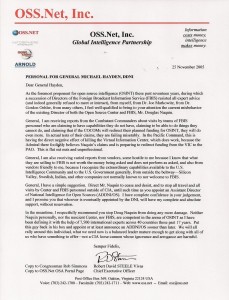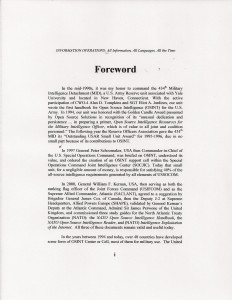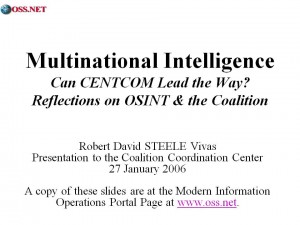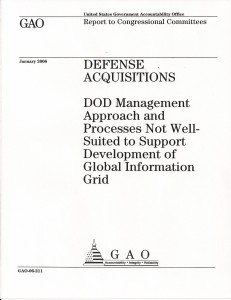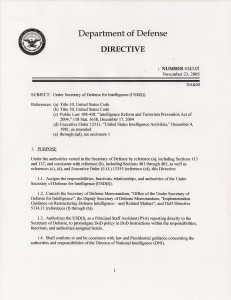Congressman Rob Simmons got into the Open Source Intelligence (OSINT) arena in 1995, and grew to understand vastly more than those serving in the U.S. Government, then or now. He was among the first if not the only Member to recognize that Information Operations (IO) was the totality of the information and intelligence spectrum, encompassing not just “intelligence” but also logistics, friendly force information, and all other information. He understood the Special Operations Command point of view: “Secret intelligence is 10% of All-Source Intelligence; and All-Source Intelligence is 10% of Information Operations.” Below is his Foreword to the first book on IO to be written from an intelligence foundation but with a World Brain perspective.
2006 Briefing to the Coalition Coordination Center (CCC) Leadership at the U.S. Central Command (USCENTCOM)–Multinational Intelligence: Can CENTCOM Lead the Way? Reflections on OSINT & the Coalition
About the Idea, Analysis, Briefings (Core), Briefings & Lectures, Budgets & Funding, Legislation, Methods & Process, Policy2006 General Accountability Office (GAO) Defense Acquisitions DoD Management Approach and Processes Not Well-Suited to Support Development of Global Information Grid
General Accountability Office
Oops 2006: DOD’s management approach for the GIG–in which no one entity is clearly in charge or accountable for results–is not optimized to enforce investment decisions across the department. The DOD Chief Information Officer has lead responsibility for the GIG development effort, but this office has less influence on investment and program decisions than the military services and defense agencies, which determine investment priorities and manage program development efforts. Consequently, the services and defense agencies have relative freedom to invest or not invest in the types of joint, net-centric systems that are consistent with GIG objectives. Without a management approach optimized to enforce departmentwide investment decisions, DOD is at risk of not knowing whether the GIG is being developed within cost and schedule, whether risks are being adequately mitigated, or whether the GIG will provide a worthwhile return on DOD’s investment. The department’s three major decision-making processes are not structured to support crosscutting, departmentwide development efforts such as the GIG. In some significant respects, the department’s processes for setting requirements, allocating resources, and managing acquisitions encourage investing in systems on an individual service and defense agency basis.
2006 House Appropriations Committee Public Law 109-163 6 January 2006 Section 931 Department of Defense Strategy for Open-Source Intelligence
Historic Contributions, Legislation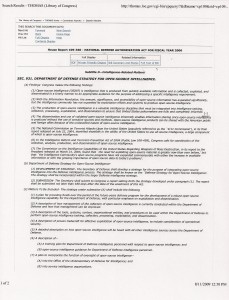
Here is a summary of what Congress demanded from DoD that has not been provided to date:
1) A plan for providing funds
2) A description of management now and as it could be improved
3) A description of tools, systems, centers, organizational entities amd procedures
4) A description of proven tradecraft including operational security
5) A description of OSINT fusion with other disciplines
6) A description of a training plan and guidance for DoD intelligence personnel
7) A plan to incorporate oversight of OSINT
8) A plan to incorporate the OSINT specialty int oall existing DoD personnel systems;
9) Aplan to utilize reserve personnel; and
10) A plan for the use of the Open Source Information System (OSIS).
2005 United Nations (UN) International Telecommunications Union (ITU) “Golden Book” of Commitments Made to the World Information Summit in Tunis
United Nations & NGOs2005 Steele to Hayden Asking for Naquin Cease & Desist
History of Opposition, Legislation, Military, PolicyDoug Naquin, the senior Central Intelligence (CIA) officer responsible for Open Source Intelligence (OSINT) and for the Open Source Center (OSC), the half-baked replacement for the Foreign Broadcast Information Service (FBIS), is a good person trapped in a bad system. He not only does not know what he does not know, but is held in multiple strait-jackets by CIA security, CIA legal, and CIA culture.
In November 2005 we recognized the severe damage that Doug Naquin–with the best of intentions–was doing to the US military, and we tried to stop him. Below is the letter that was sent to the Deputy Director of National Intelligence, General Michael Hayden, USAF. He ignored the letter.
Naquin is still doing damage. Apart from misrepresentations to the Combatant Commanders (COCOMs), the personnel exchange is sending unqualified FBIS/OSC people out to the military where they not only have no clue, but they also try to spin everything to CIA's advantage. The Department of Defense (DoD) needs to realize that the OSC is not a “full-spectrum” OSINT shop; that it can barely handle CIA's own internal requirements (and by some accounts, is considered argely worthless among the CIA analysts as well)
This letter was on target. It is still on target. It is time for Doug Naquin to do what he does best: stay on campus at CIA and stop messing up the US military with misprepresentations, failures to perform, and exported personnel that are not worth the C Rations it takes to feed them.
